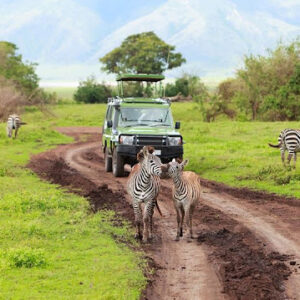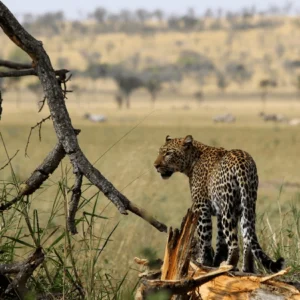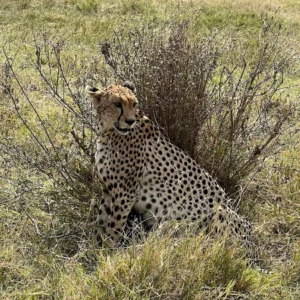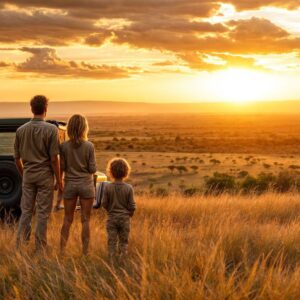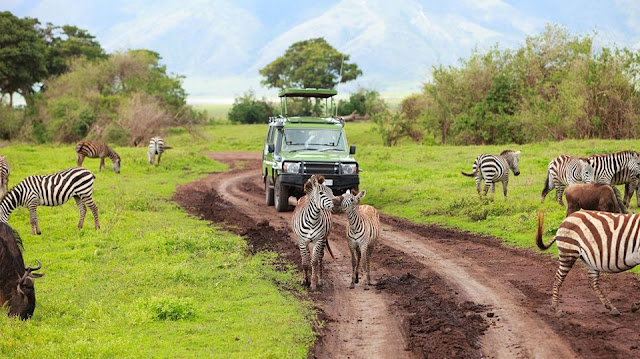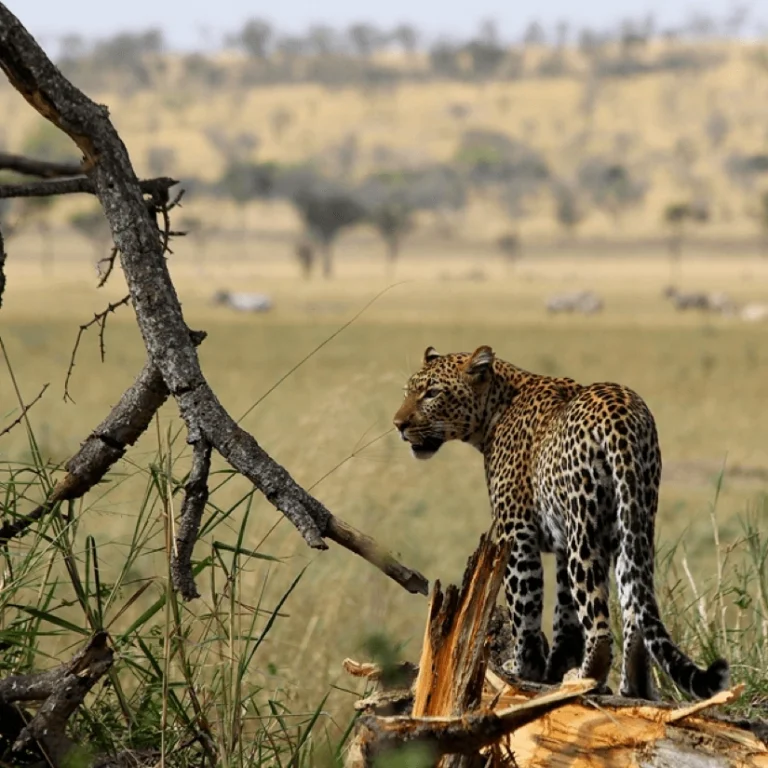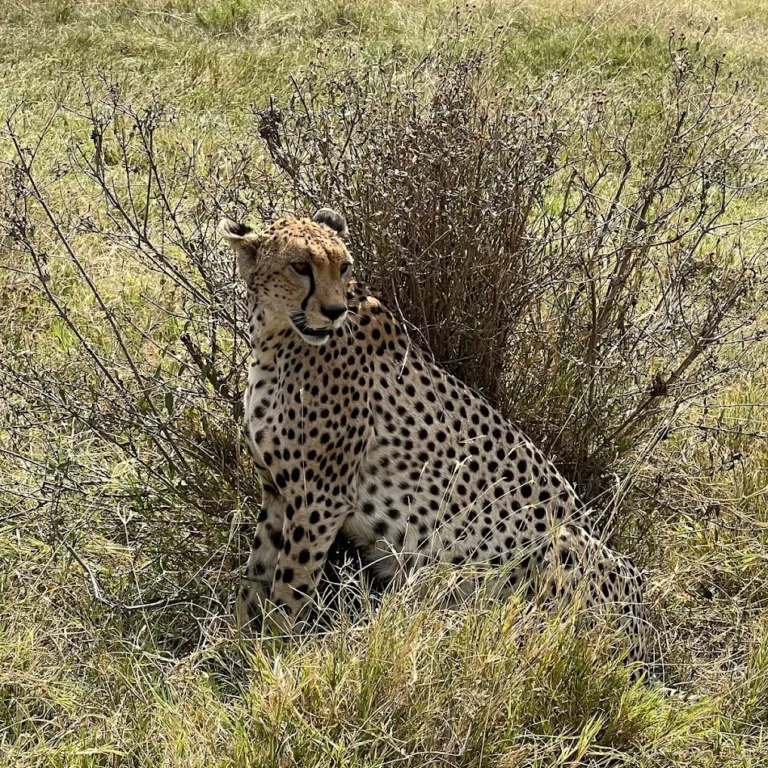Eastern Serengeti: Everything You Need to Know.
The Eastern Serengeti is a captivating region, teeming with diverse wildlife, stunning landscapes, and rich cultural heritage. As one of the most famous parts of Tanzania’s vast Serengeti ecosystem, it offers a unique and immersive experience for travelers. Here, we delve into every aspect of the Eastern Serengeti, providing you with a comprehensive guide to explore and appreciate this magnificent area. The region can be visited year-round for wildlife sightings, but November to February are the best months to see the Great Migration herds passing through towards the Southern Serengeti. The green season of December to May sees the plains become lush and verdant, which attracts abundant game.
The Geography of the Eastern Serengeti
The Eastern Serengeti is distinguished by its varied topography. This includes rolling plains, rocky outcrops known as kopjes, and verdant woodlands. This diverse landscape supports a wide array of flora and fauna, making it a prime destination for wildlife enthusiasts. The area is bordered by the Grumeti River to the west and the Great Rift Valley to the east. Creating a natural corridor for migratory animals.
Wildlife in the Eastern Serengeti
The Eastern Serengeti is renowned for its rich biodiversity. Making it a prime destination for wildlife enthusiasts. This area is home to the iconic Big Five: lions, leopards, elephants, buffalo, and the black rhino. The region is also famous for the Great Migration, where over 1.5 million wildebeest and hundreds of thousands of zebras and gazelles traverse the plains. They create a spectacular sight as they move in search of greener pastures. Predators like hyenas, cheetahs, and the elusive African wild dog follow the herds, providing thrilling game viewing opportunities.
Birds of the Eastern Serengeti
Birdwatching in the Eastern Serengeti is a captivating experience, with over 500 bird species recorded. The Martial Eagle, one of Africa’s most powerful birds of prey, soars above, while the colorful Lilac-breasted Roller and the elegant Grey-crowned Crane add splashes of color to the landscape. The region is also home to various vultures, which play a crucial role in the ecosystem by cleaning up carrion. During the wet season, migratory birds from Europe and Asia join the local species, enhancing the avian diversity.
Vegetation in the Eastern Serengeti
The Eastern Serengeti boasts diverse vegetation, ranging from expansive grasslands to scattered woodlands and dense thickets. Dominant plant species include the resilient Acacia and the towering Baobab trees, which provide essential resources for wildlife. The grasslands, primarily composed of species such as Themeda and Digitaria, support large herbivore populations, while the woodlands and thickets offer shelter and food for various smaller animals and birds.
Things to Do in the Eastern Serengeti
In the Eastern Serengeti, you can experience game drives to see wildlife like the big cats in the Lobo Valley. Take a hot-air balloon safari for aerial views of the plains and the Great Migration, and go on walking safaris to observe smaller bush creatures. Visitors can also learn about Maasai culture, enjoy bush meals, visit the Moru Kopjes for cheetah viewing, and explore the diverse landscapes featuring short grass plains and acacia trees. Visitors to the Eastern Serengeti can enjoy a wide array of activities that cater to different interests and preferences.
Game Drives: Embark on game drives to explore the vast savannah and witness the abundant wildlife. Guided by experienced rangers, these drives offer close encounters with animals and insightful commentary on their behaviors and habitats.
Walking Safaris: For a more intimate connection with nature, walking safaris allow visitors to explore on foot, guided by expert trackers. This activity provides a unique perspective on the smaller flora and fauna that are often overlooked during vehicle safaris.
Cultural Visits: Cultural visits to Maasai villages offer a fascinating glimpse into the traditions and daily lives of the indigenous people. Visitors can learn about Maasai customs, watch traditional dances, and gain an appreciation for their harmonious relationship with the land and wildlife.
Hot Air Balloon Rides: Experience the Eastern Serengeti from above with hot air balloon rides. These early morning flights provide stunning aerial views of the landscape and its inhabitants, often followed by a luxurious champagne breakfast in the bush.
Weather and Climate of the Eastern Serengeti
The Eastern Serengeti enjoys a tropical savannah climate, characterized by distinct wet and dry seasons. The dry season, from June to October, features cooler temperatures and clear skies, making it ideal for wildlife viewing. During the wet season, from November to May, the landscape transforms into lush greenery, and many animals give birth. Temperatures remain relatively stable throughout the year, averaging between 15°C (59°F) at night and 30°C (86°F) during the day.
When to Visit the Eastern Serengeti
The optimal time to visit the Eastern Serengeti depends on the desired experiences. For witnessing the Great Migration and prime wildlife viewing, the dry season from June to October is best. If you’re interested in birdwatching and seeing newborn animals. The wet season, particularly from January to March, is ideal. Each season offers unique opportunities and breathtaking scenery. The region can be visited year-round for wildlife sightings. November to February are the best months to see the Great Migration herds passing through towards the Southern Serengeti. The green season of December to May sees the plains become lush and verdant, which attracts abundant game.
Accommodations in the Eastern Serengeti
Accommodations in the Eastern Serengeti include permanent, seasonal, and mobile lodges and camps, with options ranging from budget to luxury. Offering amenities like game drives, private verandas, en-suite facilities, and fine dining experiences. Popular choices are &Beyond Klein’s Camp, an intimate wilderness paradise, and Lemala Nanyukie Tented Lodge, a luxury tented camp known for its wildlife viewing opportunities. Visitors can find solid, brick-built lodges or canvas tents, including mobile ones that follow the Great Migration, with some located on the ground or rocky outcrops for panoramic views.
Location and How to Reach the Eastern Serengeti
To reach the Eastern Serengeti, fly from Kilimanjaro International Airport (JRO) or Arusha Airport (ARK) to a Serengeti airstrip like Lobo, then take a road transfer to your lodge or camp. Alternatively, you can drive from Arusha through the Ngorongoro Conservation Area for a longer journey. But this involves significant time and planning to reach the eastern sections. The Eastern Serengeti is located in northern Tanzania and is accessible by various means.
By Air
The most convenient way to reach the Eastern Serengeti is by air. Seronera Airstrip and Kogatende Airstrip receive daily flights from Arusha, Dar es Salaam, and other major cities in Tanzania.
By Road
For those who prefer a road trip, driving from Arusha to the Serengeti is an option. The journey takes approximately 7-8 hours. Offering scenic views of Tanzania’s countryside and an opportunity to experience rural life along the way.
Fee Structure of the Eastern Serengeti
The Serengeti National Park’s fee structure is divided by residency status and age. With separate charges for non-residents, East African Community (EAC) citizens, and Tanzanian citizens. Differing between adults and children (5-15 years), with free entry for those under 5. Fees are also seasonal, with higher rates during peak season (May to March) and lower rates during the low season (March to May). The standard park entry fee is subject to an 18% Value Added Tax (VAT) and may include additional concession fees depending on the accommodation type within the park. Entry fees to the Eastern Serengeti are regulated by the Tanzanian National Parks Authority. As of 2024, the fees are as follows:
Adults: $70 per person per day
Children (5-15 years): $20 per person per day
Vehicles: $40 per vehicle per day
Additional fees may apply for guided tours, camping, and specific activities like hot air balloon rides.
Safari Tours in the Eastern Serengeti
Safari tours in the Eastern Serengeti focus on experiencing the vast plains and Grumeti River crossing. Particularly for the Wildebeest Migration from late May to July, offering activities like game drives and walking safaris. The area features kopjes, plains, and hills. Providing diverse scenery for wildlife observation. Tours range from custom-made trips and walking safaris to luxury accommodations and combined packages with Zanzibar holidays. Numerous tour operators offer safari packages tailored to various interests and budgets.
Luxury safaris, provided by operators such as ours. Offer exclusive lodges, gourmet meals, and private game drives, ensuring a premium experience.
Mid-range safaris by companies like us as Intrepid Travel and Adventures. Provide a balanced mix of comfort and adventure, featuring well-equipped lodges and knowledgeable guides.
Budget-friendly options from operators like Explore! and Nomad Tanzania offer excellent value, with basic accommodations and shared game drives. Ensuring an authentic experience without excessive costs.
What is the best time to visit the Eastern Serengeti?
The best time to visit depends on your interests. For the Great Migration and optimal wildlife viewing, visit between June and October. For birdwatching and witnessing the birthing season, January to March is ideal.
How do I get to the Eastern Serengeti?
The most convenient way is by flying into Seronera or Kogatende airstrips. Alternatively, you can drive from Arusha, which takes about 7-8 hours.
What type of accommodation is available?
Accommodations range from luxury lodges and tented camps to budget campsites, catering to various preferences and budgets.
What activities can I do in the Eastern Serengeti?
Popular activities include game drives, walking safaris, cultural visits to Maasai villages, and hot air balloon rides.
Are there any additional fees apart from the entry fee?
Yes, additional fees may apply for guided tours, camping, and specific activities like hot air balloon rides.
What are 5 Reasons to Begin in the Eastern Serengeti
Five reasons to begin your Serengeti safari in the eastern sector include its status as a remote, off-the-beaten-path destination with a high concentration of cheetahs and other wildlife, the unique opportunity for walking safaris not possible elsewhere, the chance to experience the bustling eastern waterhole attracting diverse animals, stunningly beautiful and less-crowded landscapes compared to other regions, and a setting that allows for a more intimate and immersive wildlife encounter from the start.
Unique Wildlife Encounters. Experience diverse and abundant wildlife, including the Great Migration.
Stunning Landscapes. Enjoy breathtaking views of rolling plains and picturesque acacia trees.
Fewer Crowds. Explore a less crowded region for a more intimate safari experience.
Cultural Experiences. Engage with local Maasai communities and learn about their traditions.
Proximity to Kilimanjaro: Easily combine a Serengeti safari with a Kilimanjaro climb for an unforgettable adventure.

